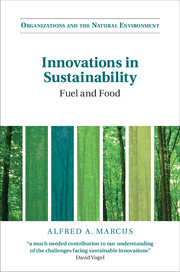Book contents
- Frontmatter
- Dedication
- Contents
- List of figure and tables
- Foreword
- Acknowledgments
- Introduction the path to sustainability
- Part I Funding sustainable startups
- Part II Business models
- Part III The macroenvironment and industry context
- 5 Ticket to ride: Toyota and General Motors
- 6 Blowing in the wind: Vestas and General Electric
- Part IV Finding customers
- Part V Competition between mission and non-mission based businesses
- Concluding observations: the journey continues
- Index
5 - Ticket to ride: Toyota and General Motors
from Part III - The macroenvironment and industry context
Published online by Cambridge University Press: 05 August 2015
- Frontmatter
- Dedication
- Contents
- List of figure and tables
- Foreword
- Acknowledgments
- Introduction the path to sustainability
- Part I Funding sustainable startups
- Part II Business models
- Part III The macroenvironment and industry context
- 5 Ticket to ride: Toyota and General Motors
- 6 Blowing in the wind: Vestas and General Electric
- Part IV Finding customers
- Part V Competition between mission and non-mission based businesses
- Concluding observations: the journey continues
- Index
Summary
The challenge that Toyota and GM confronted was the extent to which they should commit to alternative vehicles in light of changes in the macroenvironment and the industry context in which they operated. They had to make their choices in light of serious global environmental, energy, and security concerns that could affect oil prices. To what extent should they forego their reliance on vehicles propelled solely or almost exclusively by gasoline? Their choices included both hybrids and fuel-cell vehicles, but they could not overlook improving conventional gasoline-powered vehicles. If they committed to alternative vehicles which types should they be? Given the global uncertainties and rapidly evolving industry context, what would best fit their future plans?
Global uncertainties
Toyota and GM faced a range of vehicle choices including hybrid electric vehicles (HEVs), plug-in hybrid electric vehicles (PHEVs), and fuel-cell vehicles (FCVs). However, they also could focus on making improvements in the autos they already sold that were propelled by the internal combustion engine (ICE). An ultra-efficient gasoline engine and/or auto body that relied on cutting-edge technologies was possible. This vehicle, though not free of emissions, might prove to be highly energy efficient. To develop an ultra-efficient conventional engine, additional advances were needed in sophisticated electronic timing and sensing devices, advanced aerodynamic engineering, regenerative braking, and other areas. Many of these features later could be incorporated into hybrids and fuel-cell vehicles should that be necessary. An advanced diesel engine also was possible. Diesels might be a viable alternative in Europe and other parts of the world where they already were in widespread use and perhaps they could gain greater acceptance in the United States.
- Type
- Chapter
- Information
- Innovations in SustainabilityFuel and Food, pp. 147 - 170Publisher: Cambridge University PressPrint publication year: 2015



